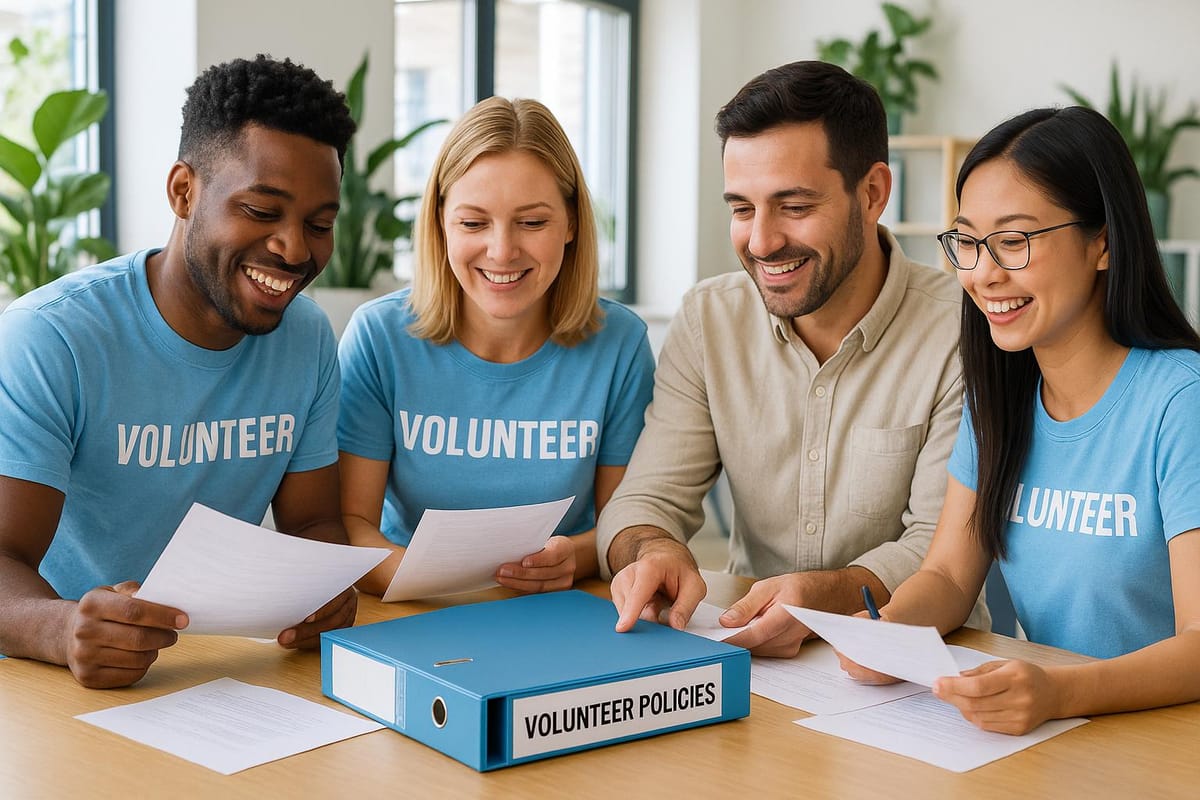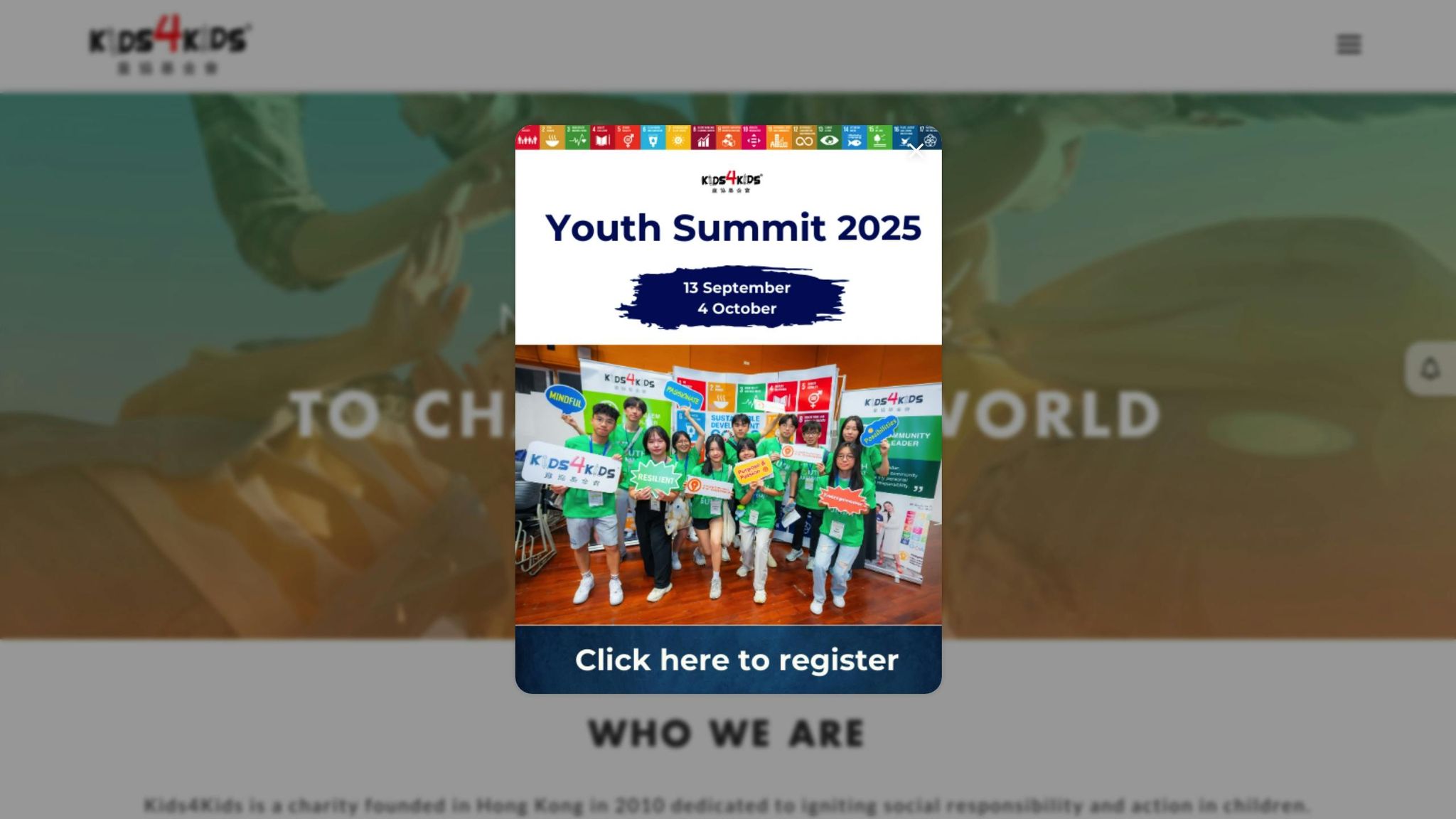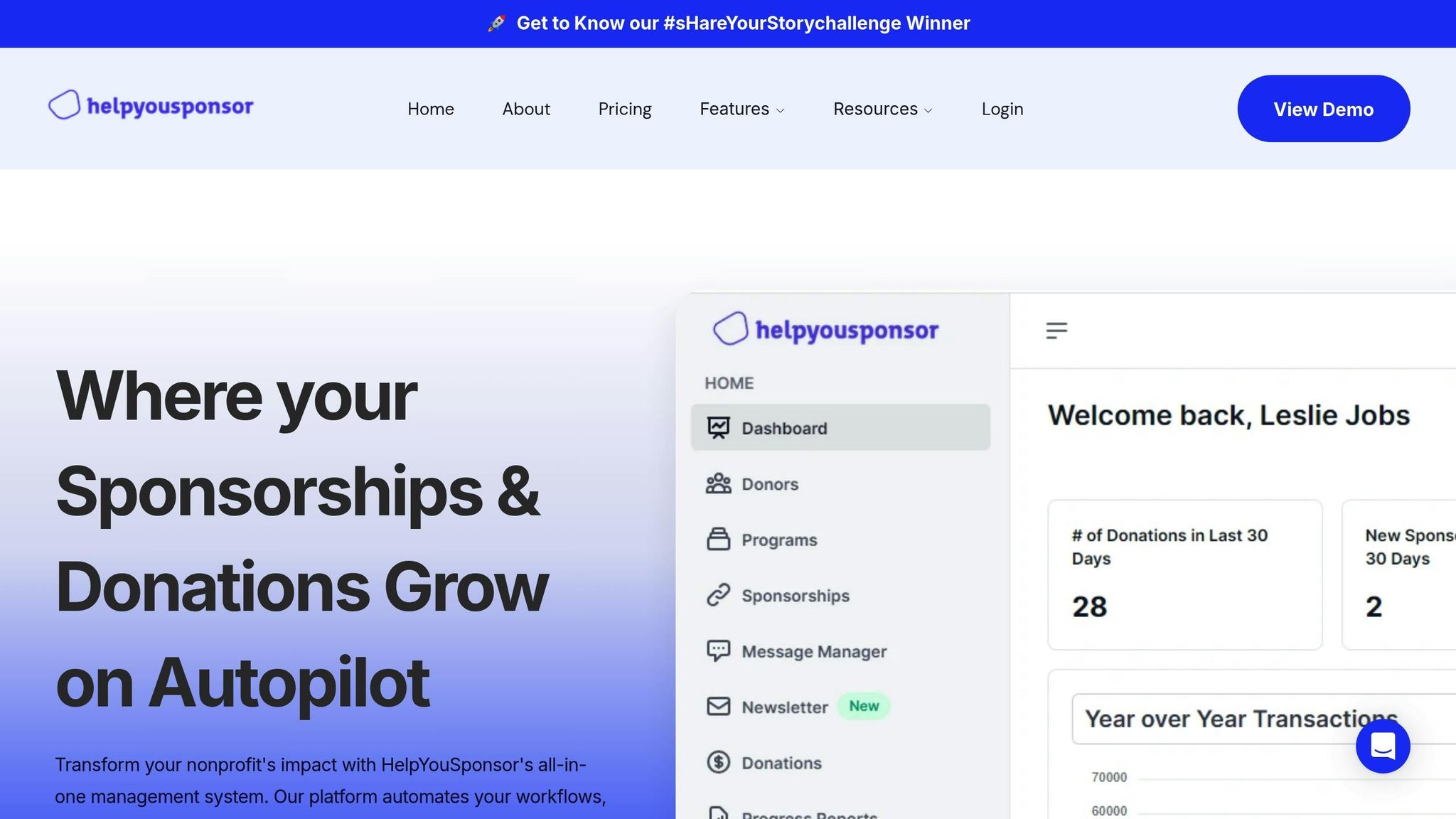How to Write Volunteer Policies for Child Sponsorship
Establishing volunteer policies for child sponsorship is essential for child safety, volunteer support, and legal compliance.

Creating volunteer policies for child sponsorship programs ensures child safety, supports volunteers, and maintains ethical and legal standards. These policies outline clear roles, boundaries, and procedures to protect children and streamline operations. Here's a quick overview of what to include:
- Child Safety Rules: Background checks, training on abuse prevention, supervised communication, and digital safety protocols.
- Volunteer Roles: Define permitted activities (e.g., writing letters, organizing events) and prohibited actions (e.g., unsupervised contact, accessing sensitive data).
- Legal Requirements: Liability coverage, confidentiality agreements, and compliance with child protection laws.
- Training and Updates: Regular training sessions, policy reviews, and updates to ensure relevance and compliance.
Start by drafting clear, easy-to-follow policies, train your volunteers, and review the policies regularly to keep them effective.
Kids4Kids | Child Safeguarding Policy for Volunteers

Core Policy Components
Creating effective volunteer policies for child sponsorship programs involves incorporating specific elements that prioritize child protection, provide clear guidance for volunteers, and ensure adherence to legal standards. These components build upon earlier program requirements, offering detailed, actionable guidelines tailored to volunteers.
Child Safety Rules
Child safety rules are a cornerstone of any volunteer policy in child sponsorship programs. These rules outline essential protocols, including:
- Volunteer Background Screening: Ensuring all volunteers undergo criminal background checks, reference checks, and identity verification as outlined in program protocols.
- Training Requirements: Providing comprehensive training on child abuse prevention, safety procedures, and emergency response plans.
- Communication Guidelines: Establishing rules for interactions between volunteers and sponsored children, such as supervision requirements during in-person or virtual engagements.
- Documentation Standards: Setting procedures for logging and reporting any incidents or concerns to the appropriate authorities.
- Digital Safety: Extending existing data security policies to include protocols for handling photographs, personal information, and online interactions involving sponsored children.
Once these safety measures are in place, defining the roles and boundaries of volunteers is the next step in ensuring smooth operations.
Volunteer Duties and Limits
Clearly defining volunteer roles helps avoid confusion and ensures that the program runs efficiently. Here’s a breakdown of responsibilities and restrictions:
| Responsibility Area | Permitted Activities | Not Permitted |
|---|---|---|
| Communication | Writing letters, sending approved gifts | Direct contact without supervision |
| Program Support | Organizing events, assisting with administrative tasks | Making financial or legal decisions |
| Documentation | Recording activities, maintaining logs | Accessing sensitive data of children |
| Advocacy | Sharing approved program materials | Speaking to media without approval |
Defining these roles helps set expectations, but it’s equally vital to include legal guidelines to protect both the organization and its volunteers.
Legal Requirements
Volunteer policies should address the following legal considerations to ensure compliance and safeguard all parties involved:
- Liability Coverage Organizations need to maintain adequate insurance coverage and clearly communicate liability limitations to volunteers. This may include accident coverage and protection against potential legal claims.
- Confidentiality Agreements Volunteers must sign agreements that emphasize the importance of safeguarding sensitive information. These agreements should cover data privacy, handling procedures, and consequences for breaches.
-
Compliance Standards
Policies should ensure adherence to:
- State-specific volunteer protection laws.
- Federal child protection regulations.
- Tax considerations related to volunteer work.
- Risk management protocols.
- Mandatory reporting requirements for suspected abuse or misconduct.
Creating and Using Policies
Writing Policy Documents
When crafting volunteer policies, it's important to use a format that’s easy to follow and understand. Each policy should include:
- Policy Title and Purpose: Clearly state what the policy addresses.
- Scope: Define who the policy applies to and under what circumstances.
- Definitions: Explain any key terms or concepts.
- Specific Guidelines: Provide step-by-step instructions or actions.
- Consequences: Outline what happens if the policy is violated.
- Contact Information: Include details on where to get help or ask questions.
Keep the language simple and avoid industry jargon. Instead of vague instructions, be as specific as possible. For example, say: "All communication with sponsored children must go through approved channels, with program coordinators copied on all correspondence."
Once these policies are in place, the focus shifts to training volunteers and ensuring those policies are actively applied and improved over time.
Volunteer Training
After policies are written, volunteers need training that’s practical and easy to understand. A well-structured training program might look like this:
| Training Component | Frequency | Format | Documentation |
|---|---|---|---|
| Initial Orientation | Once, before starting | In-person or virtual workshop | Signed attendance sheet |
| Safety Protocols | Every 6 months | Interactive online modules | Digital completion certificate |
| Policy Updates | As needed | Email notifications + brief quiz | Quiz completion record |
| Refresher Sessions | Annually | Group discussions | Participation log |
This approach ensures volunteers are both informed and engaged, while also providing a clear record of training completion.
Policy Review Process
Regular reviews are essential to keep policies effective and relevant. Here’s how you can maintain their quality:
1. Quarterly Internal Reviews
- Assess how well policies are working.
- Monitor compliance rates and review incident reports.
- Identify areas that need improvement and document them.
2. Annual Comprehensive Assessment
- Analyze data from incident reports and compliance tracking.
- Collect feedback from both volunteers and coordinators.
- Ensure policies align with any new legal requirements.
- Check for clarity and ease of understanding.
3. Update Implementation
- Record any changes made to policies, along with the reasons for them.
- Share updates with all relevant parties promptly.
- Offer additional training if the updates are significant.
- Monitor and log acknowledgments from volunteers to confirm they’ve reviewed the changes.
HelpYouSponsor’s platform simplifies this process with tools for distributing policies, tracking training progress, and sending automated reminders for reviews, making it easier to keep policies up-to-date and in use.
Sample Policies and Forms
Policy Templates
Here are some essential templates designed for child sponsorship volunteer programs:
| Policy Type | Key Components | Required Elements |
|---|---|---|
| Child Protection | Background check requirements, communication boundaries, reporting procedures | Signed code of conduct, emergency contact list, incident report forms |
| Volunteer Roles | Position descriptions, time commitments, training requirements | Skills assessment, schedule templates, performance metrics |
| Communication | Approved channels, content guidelines, privacy rules | Contact logs, translation protocols, media release forms |
When using these templates, make sure to adapt them to fit your organization's specific needs while keeping child protection as the foundation. HelpYouSponsor provides customizable templates that can be quickly tailored and shared. Below, you'll find sample policies that demonstrate how these templates can be applied in real-world scenarios.
Sample Program Policies
To give you a better idea of how these templates work in practice, here are examples of successfully implemented policies in child sponsorship programs:
- Child Protection Policy Example
This policy lays out clear guidelines for both prohibited and required actions:
-
Prohibited actions:
- Being alone with a sponsored child
- Sharing personal contact information
- Posting photos without written consent
- Making promises of gifts or financial support
-
Required actions:
- Reporting any concerns within 24 hours
- Maintaining professional boundaries
- Documenting all interactions
- Using only approved communication channels
- Digital Communication Guidelines
These guidelines ensure safe and professional online interactions:
"All digital communication must:
- Be conducted through official program channels
- Include a program coordinator
- Focus only on approved topics
- Be documented in the contact log system"
Additionally, photos and videos must have written guardian consent, coordinator approval, secure storage, and must not include any location data.
- Volunteer Commitment Agreement
This agreement clearly defines volunteer expectations and responsibilities:
"Volunteers agree to:
- Complete 8 hours of initial training
- Attend quarterly refresher sessions
- Submit monthly activity reports
- Uphold confidentiality standards
- Adhere to all safety protocols"
HelpYouSponsor simplifies policy management by offering tools for digital signatures, automated tracking of training sessions, policy distribution, and monitoring compliance.
Next Steps
Key Steps to Implement
Here’s what you need to focus on:
Core Policy Elements:
- Clear background check and screening processes
- Defined boundaries for volunteer-child interactions
- Reliable reporting systems for any concerns
- Comprehensive training requirements and schedules
Action Plan and Timeline:
| Phase | Duration | Key Actions |
|---|---|---|
| Initial Setup | 2–4 weeks | Finalize policy documents and complete legal review |
| Training Development | 3–6 weeks | Create training materials and plan session schedules |
| Rollout | 4–8 weeks | Host volunteer orientations and gather signed agreements |
| Review Period | Quarterly | Evaluate policy impact and make updates as needed |
To stay on track, consider using digital tools that simplify policy management and execution.
How HelpYouSponsor Can Help

HelpYouSponsor is a powerful tool for managing volunteer policies. It offers features like centralized document storage, automated policy distribution, digital signature collection, and real-time compliance tracking. Plus, its integrated training modules ensure smooth onboarding, with automated reminders and digital attendance tracking to keep everything organized.
FAQs
What are the key steps to create effective volunteer policies for child sponsorship programs?
Creating volunteer policies for child sponsorship programs requires careful planning to ensure they align with your organization's mission while protecting children and supporting volunteers. Here's how you can approach this process:
Define the Purpose and Role of Volunteers
Start by clearly outlining what volunteers will do within your program. Specify their responsibilities, the extent of their involvement, and any boundaries they should respect. This helps set expectations from the beginning.
Set Clear Guidelines and Expectations
Lay out the rules for volunteer conduct, including how they should communicate with children, maintain confidentiality, and adhere to legal requirements like background checks. Having these policies in place ensures everyone operates on the same page.
Offer Comprehensive Training
Equip your volunteers with the knowledge and tools they need to succeed. A well-structured training program can help them understand their roles better and familiarize them with your organization's policies.
Prioritize Child Protection
Child safety should always be a top priority. Incorporate robust safeguarding measures to ensure a secure environment for all children involved in the program.
Regularly Review and Update Policies
Policies aren't static. Review them periodically to ensure they stay relevant and comply with any new laws or changes in your organization. This keeps your program effective and up-to-date.
By taking these steps, you'll build a framework that protects children, empowers volunteers, and strengthens your overall program. If you’re looking for additional tools to simplify the process, platforms like HelpYouSponsor can offer valuable resources for managing your child sponsorship initiatives.
How can organizations ensure volunteers are properly trained and stay updated on child safety protocols?
Training Volunteers for Child Safety
To keep volunteers prepared and informed about child safety protocols, organizations should establish a structured training program with regular updates. Start by designing a thorough onboarding process that covers all critical safety guidelines. Afterward, schedule periodic training sessions to address any changes in policies or emerging safety concerns.
Equip volunteers with accessible resources like handbooks, online training modules, or quick-reference guides they can consult anytime. Regular communication - whether through email updates or interactive workshops - helps ensure everyone stays informed about the latest practices and protocols. By committing to continuous education, organizations create a safer environment for both children and volunteers participating in sponsorship programs.
How can child sponsorship programs protect sensitive information and ensure confidentiality?
To safeguard sensitive information and ensure confidentiality in child sponsorship programs, it's crucial to establish clear policies and strong security protocols. Start by restricting access to personal data, making sure only authorized staff or volunteers handle this information. Utilize secure storage and sharing systems, like encrypted databases and password-protected files, to keep data safe.
Equally important is providing training for staff and volunteers on best practices for data privacy. This includes understanding and complying with privacy laws, such as the Children’s Online Privacy Protection Act (COPPA) in the U.S. Regularly revisiting and updating your policies can help address new risks and reinforce trust with both donors and beneficiaries.

